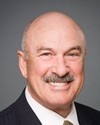To illustrate what you said, if we take aboriginal offenders, for example, basically we are at the receiving end of the issue. Most of the issues are not only multi-faceted—multidimensionnel, comme on dit en français—but they are also very complex. They are societal issues that require a concerted effort.
We usually receive the offender with a multiplicity of issues. You have issues of under-employment and low levels of education. Sometimes there is a social history that includes sexual abuse, domestic violence, substance abuse issues. You have issues of mental health, PTSD. And now it is further complicated by the proliferation of gangs. Many in this community are diverted by the influence of gangs.
When we receive these individuals in our system, we have to compose a multi-disciplinary team to develop the proper correctional planning and interventions to address the needs of the offender. It's not only done within the institutional setting, it's done as part of a continuum of care when they return to the community as well. We have demonstrated that the more we program them in the community, the less likely they are to reoffend and return to our system.
In addition to many of the interventions we have, we provide eight core correctional programs for aboriginal offenders. These include a basic healing program; living skills; circle of change; a high-intensity aboriginal family program, In Search of Your Warrior, which is a violence prevention program; and Spirit of the Warrior, which is a violence and addictions program, as well. We have a program for sex offenders that is related to the Inuit; an aboriginal offender substance abuse program, which is an addictions program specifically designed and culturally sensitive to aboriginals; and an aboriginal women's maintenance program, which is an after-care program in the community.





